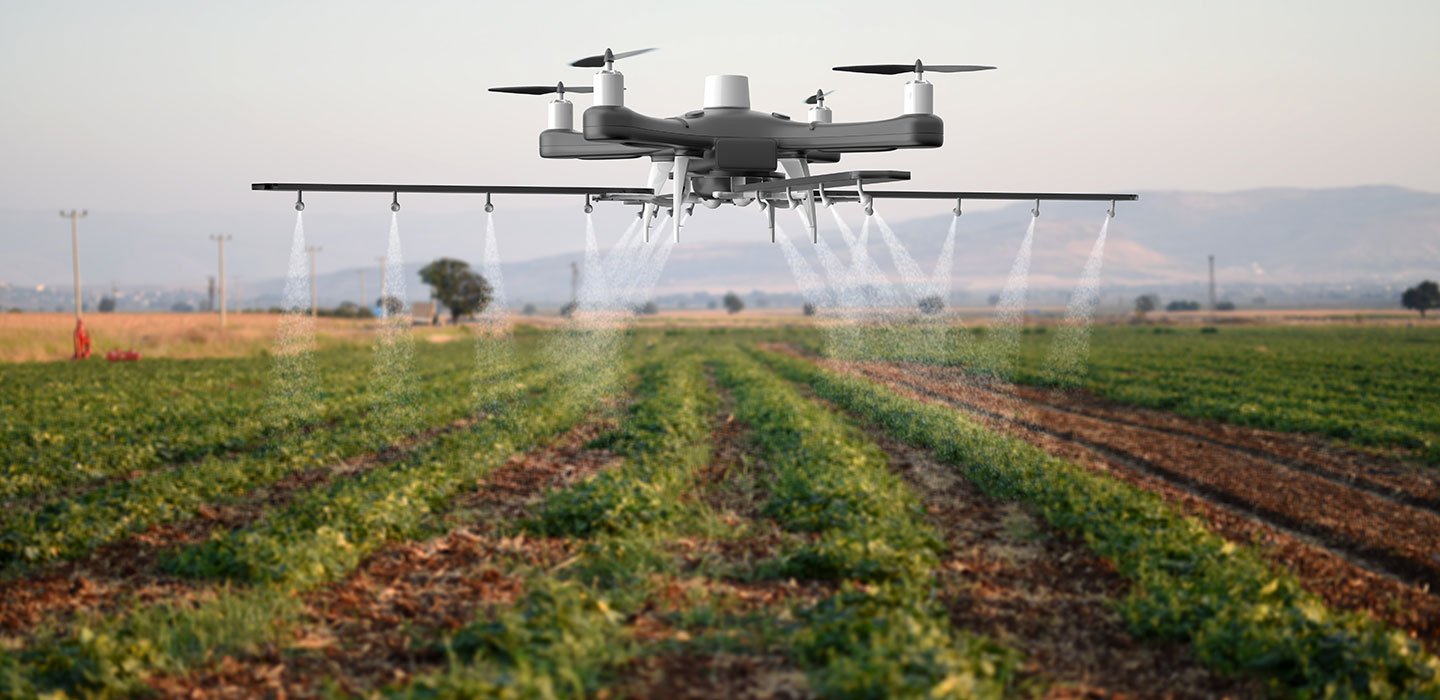四千年來,大部分中國人都靠務農為生。這一點在中國山水畫中得以呈現,人與自然如何和諧相處的畫面隨處可見。
在明朝這個中國文學、音樂和詩歌的黃金時代,應邀來華的歐洲傳教士看到當時先進的農業技術和設備時,都感到非常吃驚。
即使在最近的20世紀40年代,90%的中國人以土地為生,無論是地主、佃戶還是工人。
因此,在整個歷史上,自然界一直處於中國文化的核心位置。
儘管過去的日子聽起來令人懷念,但新的耕作方式已經將農業這種古老的生活方式帶到了創新的前沿,為貧困、飢餓和性別不平等提供了解決方案。
我是The China Current 的主持人周柳建成,帶您探索明日世界和各地人們的故事。
在今天的中國,農業是一項非常現代化的工作。鐵鍬和犁被高科技取代,整個行業正因雲計算和「無人農業」的出現而蓬勃發展。
最近我們都聽說了天舟四號無人駕駛的太空任務。這個無人駕駛的中國航天器幾周前與一個軌道空間站進行了模塊對接。無人農業在概念上與之相似。
2022年,當無人駕駛的插秧機在全國各地的稻田裡投入工作時,春耕季節的開端就顯得與往常不同。
平均每8到10分鐘,這些設備就能以一畝的速度播種。畝是亞洲使用的面積單位,換算一下,相當於每小時覆蓋5000平方米的面積。
根據水稻品種以及生長所需的時間,無人播種機還可以調整每次播種的間距。
這其中依靠的是創新科技。這些機器與一個名為北斗的導航衛星系統相連。這是一個由中國自主研發的衛星系統,與美國的GPS和歐洲伽利略的系統相似。
北斗系統指導每輛無人駕駛的機器在田間高速工作,而且精度非常高。這意味著在減少體力勞動的同時獲得高產量。
此外,這些機械還配備了智能施肥和灌溉系統。雲平台通過無線網絡控制生產,測量土壤中的濕度、成分和降水量。
在耕種中期,當雜草害蟲出現時,農業無人機會飛來救援。農民只需啓動無人機起飛,就能開始在目標土地上噴灑殺蟲劑。
到了後期需要收穫時,面對產量激增的農田,伴隨着無人收割機的啟動,就完成了路徑規劃、追蹤、自動調頭、收割及運輸的全部流程。
當自動化機械正在取代對人力的需求時,技術吸引了更多的年輕創業者,同時也讓年長的農民提升他們的技能並提高他們的收入。從某種意義上說,年輕人和老年人在同一片田地上同心協力,為共同的利益而努力。
更有趣的是,無人農業正在打破傳統農業上男女分工明顯的界限,從而支持農村婦女實現性別平等,有助於在社會上更廣泛地消除性別固化的觀念。
在全球面臨糧食危機,在貧困、飢餓和教育方面的進展不斷倒退的當下,這些人站在了創新的最前線。
這些新時期的農民為世界尋求解決歷史性挑戰的辦法提供了保證。這也代表了一種承諾:當創新應用於有意義的用途上時,可以讓社會上的每個個體都受益。
For four thousand years, agriculture has been a way of life for the Chinese people, as shown in art through the landscape paintings that capture how man and nature have lived or tried to live in harmony.
As far back as the Ming dynasty, a golden era for literature, music, and poetry, European Jesuit priests invited to China were taken aback by the sophistication of the farming techniques and equipment they saw.
Even as recently as the 1940s, 90% of Chinese people made their living off the land, be they landlords, tenants or laborers.
Thus, throughout history, nature has sat at the heart of Chinese culture.
But as nostalgic as the old days can sound, a very new way of farming has taken hold, bringing an ancient lifestyle to the frontiers of innovation and offering a solution to poverty, hunger and gender inequality.
Today, agriculture in China is a very modern endeavor. Instead of spades and ploughs, an entire industry is thriving-off cloud computing and a shift towards what’s being called “unmanned farming”.
Now we’ve all heard of unmanned space missions like the Tianzhou-4, a Chinese spacecraft with no one onboard that docked with an orbiting space station module a couple of weeks ago. Unmanned farming is similar in concept.
In 2022, the start of the spring season looked a little different when driverless transplanter machines were put to work on rice paddies across the country.
On average, every eight to ten minutes these appliances are capable of sowing seeds at a rate of one mu, a unit of area used in Asia. Putting that in different language, that’s a coverage of 5,000 square meters every hour.
Depending on the rice variety and thus the time required to sow, the automated tractors can also adjust the spacing between each planting.
What makes this possible is the technology. The machines are linked to a navigation satellite system called BeiDou, a Chinese-innovated alternative to GPS in the United States and Galileo in Europe.
BeiDou guides each driverless vehicle as they work through the fields at high-speeds and with high-precision accuracy, meaning less physical labor while returning high yields during harvesting.
In addition, the machinery are equipped with intelligent fertilizing and irrigation systems. The cloud platform controls production through a wireless network that measures moisture, composition and precipitation in the soil.
In mid-season, when weed pests make an appearance, agricultural drones fly to the rescue. Farmers simply activate their drones to take-off and begin spraying pesticides over a targeted area of land.
At the end of the season, and by now rich in more produce than the year before, the driverless machines complete a process of route tracking, planting, automotive turnaround, harvesting and delivery.
While automated machinery is replacing the need for human workers, the draw of the technology is bringing in more young entrepreneurs while allowing older farmers to upgrade their skills and raise their levels of earnings. In a sense, the young and older are working together for their combined benefit.
And this is really interesting. Unmanned farming is breaking the traditional division of labor between women and men in agriculture, thus supporting rural women in achieving gender equality and dismantling gender stereotypes more broadly in society.
These are the people at the forefront of innovation at a time when food insecurity is rolling back global progress on poverty, hunger and education.
These farmers provide some guarantee that the world can find solutions to historic challenges, but in their own way they symbolize a promise that innovation when applied to meaningful purposes can create a lasting social good for everyone.

